Nicolas Cilins (they/them) is a queer conceptual, video and performance artist from Geneva, Switzerland. Much of Cilins’ work is collaborative. They engage people and communities to cooperate and participate in the creative process, scrutinising the particular across the European continent and beyond.
Read more here
☰ New monograph Stills From Seven Works is available for order on the publisher’s website NERO, Rome and at les Presses du Réel. You can also order one copy directly here.
▶ Collected video extracts
✔ For inquiries, please use the contact form
Read more here
☰ New monograph Stills From Seven Works is available for order on the publisher’s website NERO, Rome and at les Presses du Réel. You can also order one copy directly here.
▶ Collected video extracts
✔ For inquiries, please use the contact form
Pathways, Encounters, Thresholds: Victoria Square
Video and sound installation: four-channel 4K color video, four-channel sound, 22 minutes
2024
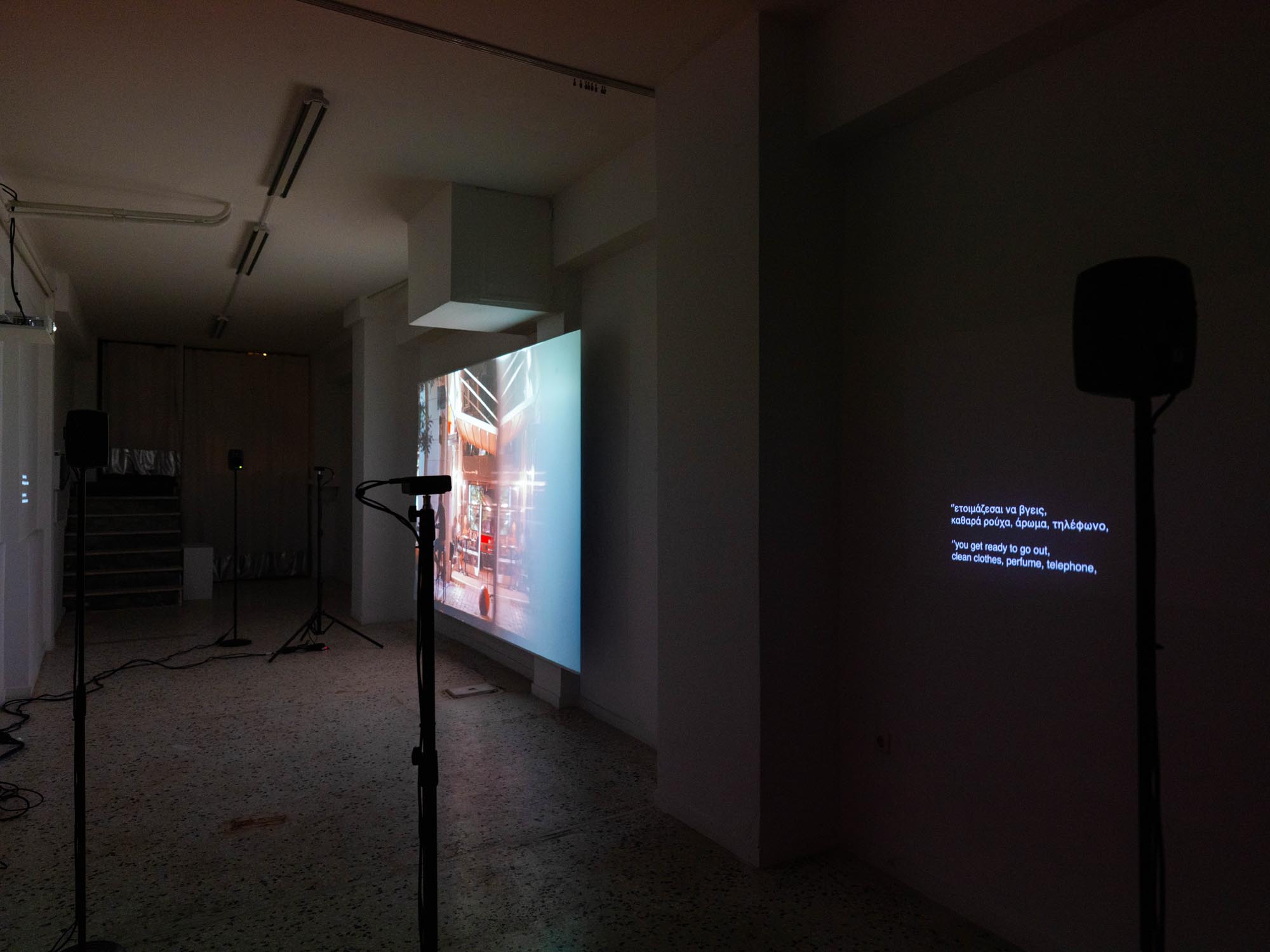
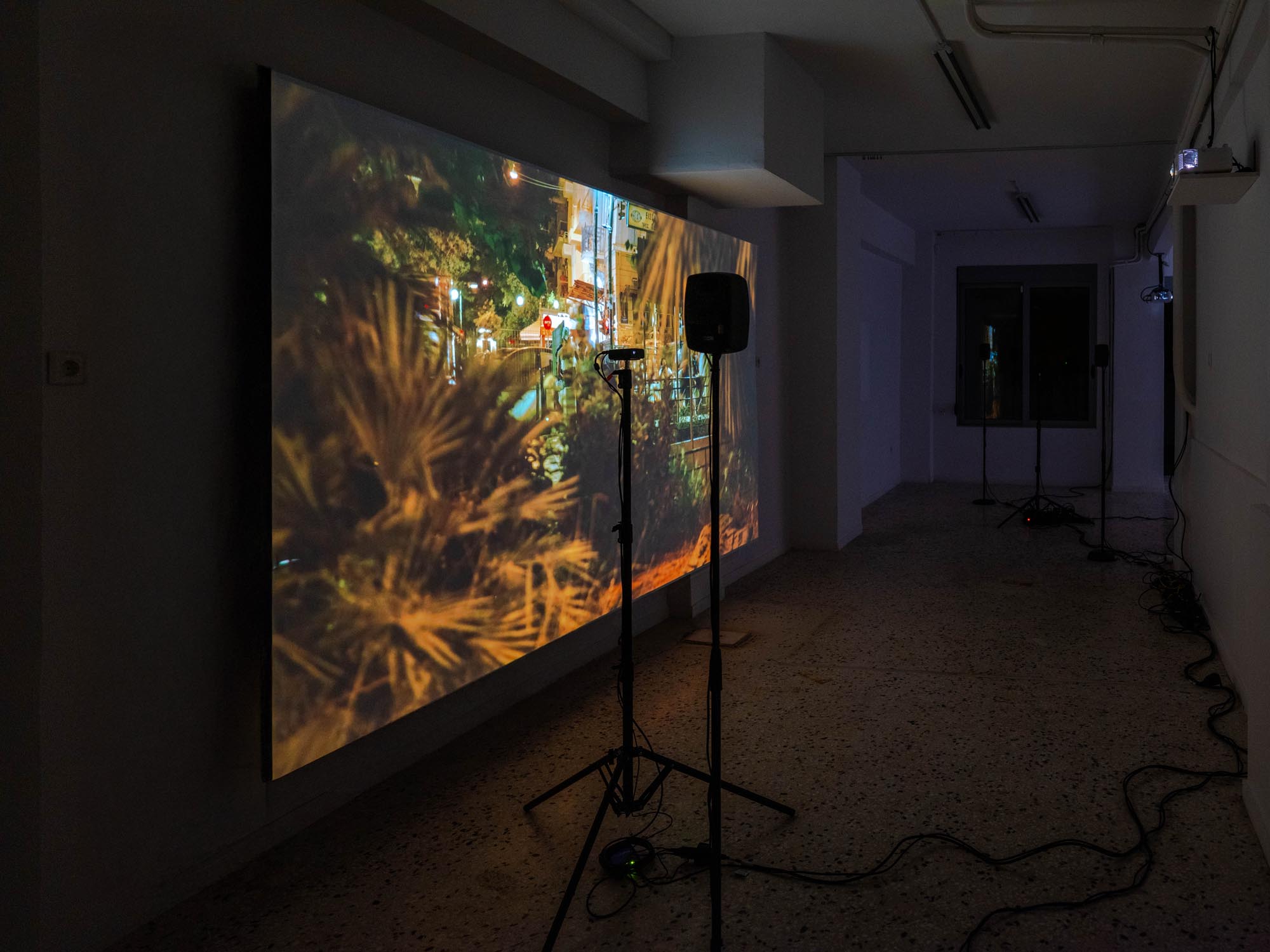



This multi-channel video and sound installation is designed to protect the privacy of young male migrants and, at times, sex workers who navigate a network of clandestine night bars around Victoria Square, Athens, Greece.
At the installation’s core are the words of the young men Cilins documented over three years. Their words are spoken as a choir in Arabic, Farsi, Greek, and French by witnesses and participants in the research. Paired with intentionally fragmented imagery of subway entrances, public benches, and aerial views, they create a polyphony of survival and resilience, confronting Europe’s twin economic austerity and refugee exclusion policies.
Sur plusieurs canaux sonores et vidéos, cette installation est conçue comme un dispositif pour protéger la vie privée de jeunes migrants et, occasionnellement, travailleurs du sexe qui naviguent dans un réseau de bars de nuit interlopes autour de la place Victoria, à Athènes, en Grèce.
Au cœur de l’installation se trouvent les propos des celleux que Cilins a documentés pendant trois ans. Ces mots sont prononcés en chœur en arabe, en farsi, en grec et en français par des témoins et participants à la recherche. Associés à des images intentionnellement fragmentées de bouches de métro, de bancs publics et de vues aériennes, ils créent une polyphonie de survie et de résistance, face à la double politique européenne d’austérité économique et de non‑accueil des réfugiés.
☰ Exhibition text by Angelo Plessas (EN)
☰ A press article by Eleni Sabani for Kathimeriní (GR)
▶ Pathways, Encounters, Thresholds: Victoria Square, documentation extract, 3’
Names may have been altered to preserve the privacy of those most needing protection.
Witnesses Ahmad Alali, Nicolas Cilins, Alexandre Collet, Bruno D’Hubert, Sofia Kouloukouri, Urich Tchamba Nya
Additional voices Konstantinos Hillas, Atefeh Yarmohammadi
With the complicity of Eva, Michalis, Wahid, Vassilis, Dimitris, Konstantina, Milad
Interviews and translations Ahmad Alali, Maya (Arabic), Sofia Kouloukouri, Antigoni Papantoni (Greek), Narges (Farsi)
Acknowledgments Dominique Auvray, Yan Duyvendak, Charlotte Terrapon, Arnold Pasquier, Lou Perret, Angelo Plessas, Eleni Riga, Mike Junior Sinsoillier
Support Pro Helvetia — Swiss Arts Council, République et canton de Genève, Ville de Genève, Société des Arts de Genève, SIG Foundation
At the installation’s core are the words of the young men Cilins documented over three years. Their words are spoken as a choir in Arabic, Farsi, Greek, and French by witnesses and participants in the research. Paired with intentionally fragmented imagery of subway entrances, public benches, and aerial views, they create a polyphony of survival and resilience, confronting Europe’s twin economic austerity and refugee exclusion policies.
Sur plusieurs canaux sonores et vidéos, cette installation est conçue comme un dispositif pour protéger la vie privée de jeunes migrants et, occasionnellement, travailleurs du sexe qui naviguent dans un réseau de bars de nuit interlopes autour de la place Victoria, à Athènes, en Grèce.
Au cœur de l’installation se trouvent les propos des celleux que Cilins a documentés pendant trois ans. Ces mots sont prononcés en chœur en arabe, en farsi, en grec et en français par des témoins et participants à la recherche. Associés à des images intentionnellement fragmentées de bouches de métro, de bancs publics et de vues aériennes, ils créent une polyphonie de survie et de résistance, face à la double politique européenne d’austérité économique et de non‑accueil des réfugiés.
☰ Exhibition text by Angelo Plessas (EN)
☰ A press article by Eleni Sabani for Kathimeriní (GR)
▶ Pathways, Encounters, Thresholds: Victoria Square, documentation extract, 3’
Names may have been altered to preserve the privacy of those most needing protection.
Witnesses Ahmad Alali, Nicolas Cilins, Alexandre Collet, Bruno D’Hubert, Sofia Kouloukouri, Urich Tchamba Nya
Additional voices Konstantinos Hillas, Atefeh Yarmohammadi
With the complicity of Eva, Michalis, Wahid, Vassilis, Dimitris, Konstantina, Milad
Interviews and translations Ahmad Alali, Maya (Arabic), Sofia Kouloukouri, Antigoni Papantoni (Greek), Narges (Farsi)
Acknowledgments Dominique Auvray, Yan Duyvendak, Charlotte Terrapon, Arnold Pasquier, Lou Perret, Angelo Plessas, Eleni Riga, Mike Junior Sinsoillier
Support Pro Helvetia — Swiss Arts Council, République et canton de Genève, Ville de Genève, Société des Arts de Genève, SIG Foundation
Investigation of a Cold Case
Generative installation for two monitors: conversations between AIs, stereo sound, variable duration
2024



On June 19, 1949, two young women were shot dead on a rural road in French-speaking Switzerland. The case remained unsolved for decades, and the case file reflects the unspoken tensions and conflicts of post-war Swiss rural society.
An anonymized version of these archives, now public, was used to customize a natural language processing algorithm, asking it to explore what could be done with the material today. The AI immediately cross-referenced the data with information about the victims available online. It then suggested creating additional AIs, each specialized in different aspects of criminology. These AIs engage in a dialogue on two monitors as if the screens themselves are conversing.
Le 19 juin 1949, deux jeunes femmes sont abattues sur une route de campagne en Suisse romande. Pendant des décennies, l’affaire est irrésolue cristallisant les non-dits de la société rurale helvétique de l’après-guerre dans un vaste dossier d’instruction.
Une version anonymisée de ces archives, désormais publiques, a été utilisée pour personnaliser un algorithme de traitement du langage naturel avec pour objectif d’explorer ce qu’il serait possible d’en faire aujourd’hui. L’intelligence artificielle a immédiatement croisé ces données avec des informations disponibles en ligne sur les victimes. Elle a ensuite proposé de créer d’autres IA, chacune spécialisée dans un aspect de la criminologie. Sur deux moniteurs, ces IA dialoguent, comme si les écrans eux-mêmes étaient en conversation.
▶ Investigation of a Cold Case, video extract, 3’
Development and Data Science Engineering Mike Sinsoillier
Editing, Sound Design Nicolas Cilins
Archives Cantonal Archives of Vaud, Vaud Security Police, photographic collections of Simon Glasson, Charles Morel, and Jacques Thévoz
Acknowledgments Yan Duyvendak, Charlotte Terrapon, Johanna Viprey
Support Pro Helvetia — Swiss Arts Council, République et canton de Genève, Ville de Genève
An anonymized version of these archives, now public, was used to customize a natural language processing algorithm, asking it to explore what could be done with the material today. The AI immediately cross-referenced the data with information about the victims available online. It then suggested creating additional AIs, each specialized in different aspects of criminology. These AIs engage in a dialogue on two monitors as if the screens themselves are conversing.
Le 19 juin 1949, deux jeunes femmes sont abattues sur une route de campagne en Suisse romande. Pendant des décennies, l’affaire est irrésolue cristallisant les non-dits de la société rurale helvétique de l’après-guerre dans un vaste dossier d’instruction.
Une version anonymisée de ces archives, désormais publiques, a été utilisée pour personnaliser un algorithme de traitement du langage naturel avec pour objectif d’explorer ce qu’il serait possible d’en faire aujourd’hui. L’intelligence artificielle a immédiatement croisé ces données avec des informations disponibles en ligne sur les victimes. Elle a ensuite proposé de créer d’autres IA, chacune spécialisée dans un aspect de la criminologie. Sur deux moniteurs, ces IA dialoguent, comme si les écrans eux-mêmes étaient en conversation.
▶ Investigation of a Cold Case, video extract, 3’
Development and Data Science Engineering Mike Sinsoillier
Editing, Sound Design Nicolas Cilins
Archives Cantonal Archives of Vaud, Vaud Security Police, photographic collections of Simon Glasson, Charles Morel, and Jacques Thévoz
Acknowledgments Yan Duyvendak, Charlotte Terrapon, Johanna Viprey
Support Pro Helvetia — Swiss Arts Council, République et canton de Genève, Ville de Genève
Stills From Seven Works
Book, softcover, 280 pages, 1260 ill., 22 x 21 cm
2024
















A monograph dedicated to Nicolas Cilins’ films between 2011 and 2020, Stills From Seven Works contains hundreds of pictures documenting seven moving image projects. The images are arranged into grids, like a contact sheet or a storyboard. The book includes an academic essay by Kathleen Bühler, film historian and chief curator at the Kunstmuseum Bern, a philosophical reading by French philosopher and art critic David Zerbib, and a conversation between German curator and researcher Anja Lückenkemper and Nicolas Cilins.
Monographie dédiée aux films de Nicolas Cilins réalisés entre 2011 et 2020, Stills From Seven Works contient des centaines d'images qui documentent sept projets. Ces images sont disposées en grilles, comme sur une planche contact ou un storyboard. Le livre comprend un essai critique de Kathleen Bühler, historienne du cinéma et conservatrice en chef du Kunstmuseum de Berne, une lecture philosophique du philosophe et critique d'art français David Zerbib, ainsi qu'une conversation entre la commissaire et chercheuse allemande Anja Lückenkemper et Nicolas Cilins.
☰ What Do We Do Now That We Are Together?, a conversation between Anja Lückenkemper and Nicolas Cilins (EN)
Conversation Anja Lückenkemper
Essays Kathleen Bühler, David Zerbib
Film presentations Anja Lückenkemper
Graphic design Paul Chemetoff, Nicolas Cilins
English translations Daniel Hendrickson
Copy Editing Daniela Almansi, Elisabeth Raffy, Timothy Stroud Proofreading Anna Frederike Niebuhr, Elisabeth Raffy, Timothy Stroud
Studio Assistance Alexandre Collet, Bruno d’Hubert
Support École nationale supérieure d’art de Bourges (FR), Fondation Jan Michalski, Lausanne (CH), Fonds municipal d’art contemporain, Ville de Genève (CH), Pro Helvetia, Swiss Arts Council (CH)
Thank to all participants in the films for their trust and patience; the authorsof this book for their support; Yan Duyvendak and Dominique Auvray, without whom this body of works would not exist. They would also like to thank Mohamed Al-Musibli, Yto Barrada, Marc Bembekoff, Erik Bullot, Diane Daval, Michèle Freiburghaus, Véronique Fréjabue, Christophe Kihm, Frank Lamy, Kelvin Lau, Anne-Belle Lecoultre, Pascal Mabut,Lina Majdalanie, Rosa Molina, Thierry Mouillé, Angelika Ramlow, Tina Smoljko, Charlotte Terrapon, Tien Nguyen The, Johanna Viprey, Frank Westermeyer and Uli Ziemmons.
Monographie dédiée aux films de Nicolas Cilins réalisés entre 2011 et 2020, Stills From Seven Works contient des centaines d'images qui documentent sept projets. Ces images sont disposées en grilles, comme sur une planche contact ou un storyboard. Le livre comprend un essai critique de Kathleen Bühler, historienne du cinéma et conservatrice en chef du Kunstmuseum de Berne, une lecture philosophique du philosophe et critique d'art français David Zerbib, ainsi qu'une conversation entre la commissaire et chercheuse allemande Anja Lückenkemper et Nicolas Cilins.
☰ What Do We Do Now That We Are Together?, a conversation between Anja Lückenkemper and Nicolas Cilins (EN)
Conversation Anja Lückenkemper
Essays Kathleen Bühler, David Zerbib
Film presentations Anja Lückenkemper
Graphic design Paul Chemetoff, Nicolas Cilins
English translations Daniel Hendrickson
Copy Editing Daniela Almansi, Elisabeth Raffy, Timothy Stroud Proofreading Anna Frederike Niebuhr, Elisabeth Raffy, Timothy Stroud
Studio Assistance Alexandre Collet, Bruno d’Hubert
Support École nationale supérieure d’art de Bourges (FR), Fondation Jan Michalski, Lausanne (CH), Fonds municipal d’art contemporain, Ville de Genève (CH), Pro Helvetia, Swiss Arts Council (CH)
Thank to all participants in the films for their trust and patience; the authorsof this book for their support; Yan Duyvendak and Dominique Auvray, without whom this body of works would not exist. They would also like to thank Mohamed Al-Musibli, Yto Barrada, Marc Bembekoff, Erik Bullot, Diane Daval, Michèle Freiburghaus, Véronique Fréjabue, Christophe Kihm, Frank Lamy, Kelvin Lau, Anne-Belle Lecoultre, Pascal Mabut,Lina Majdalanie, Rosa Molina, Thierry Mouillé, Angelika Ramlow, Tina Smoljko, Charlotte Terrapon, Tien Nguyen The, Johanna Viprey, Frank Westermeyer and Uli Ziemmons.
Healing Routine
A situation and three-channel video installation, 18’
2022




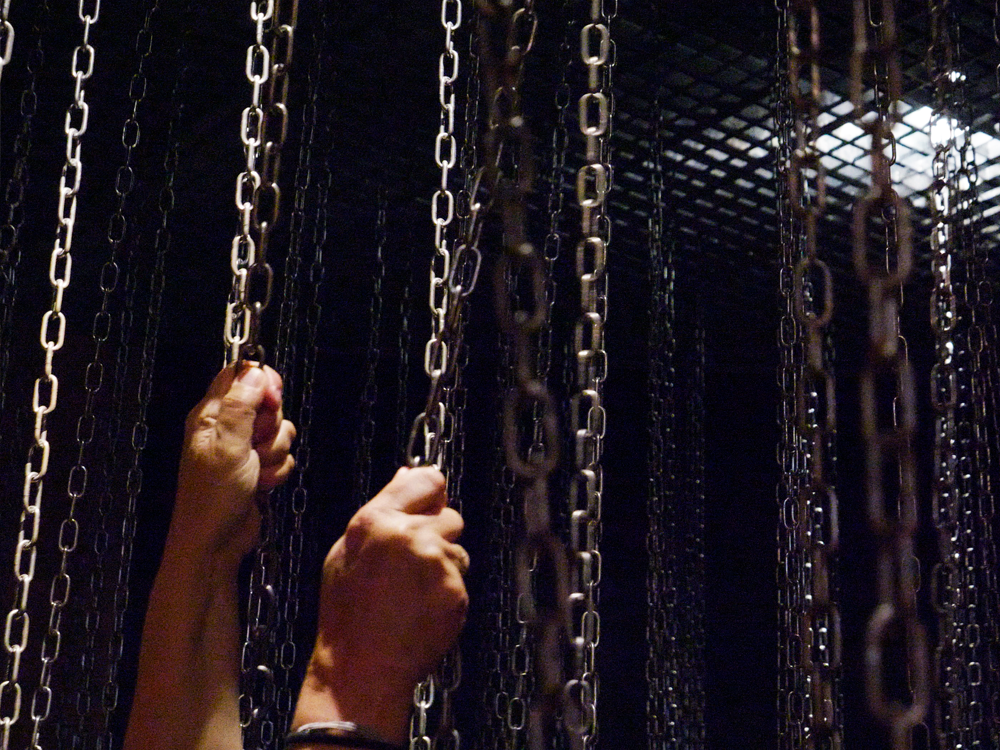
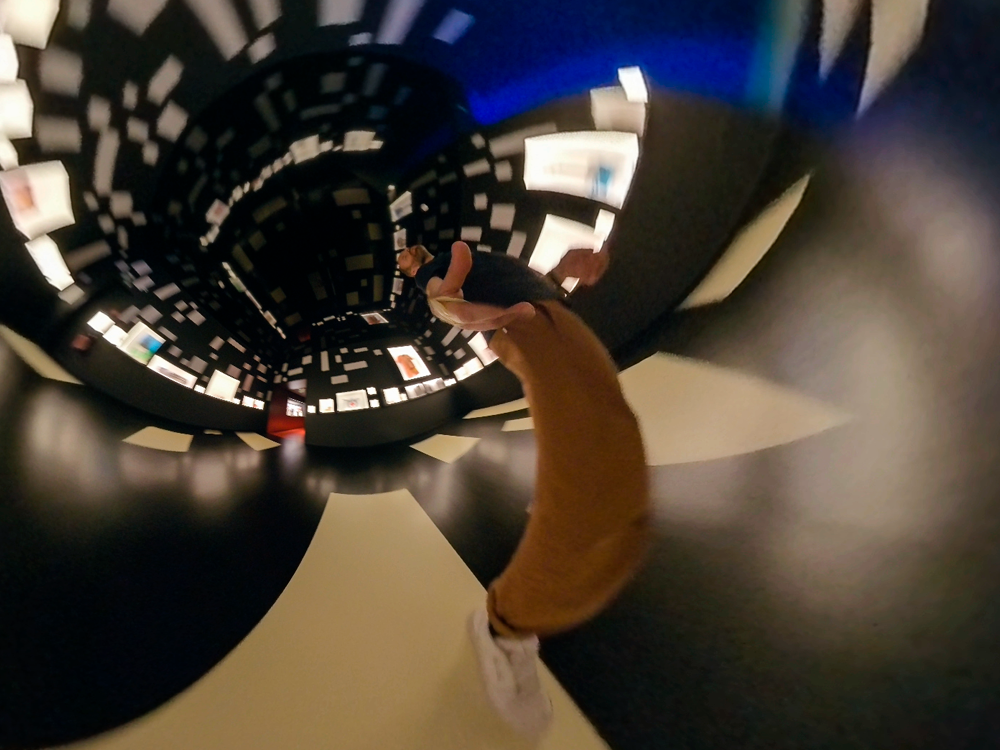
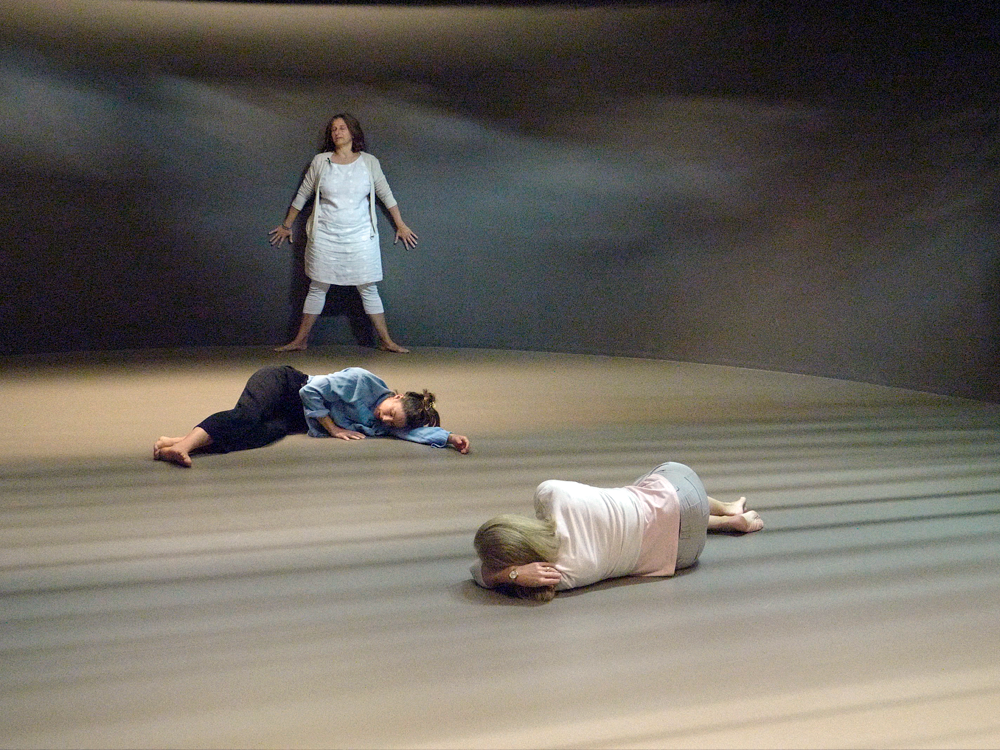
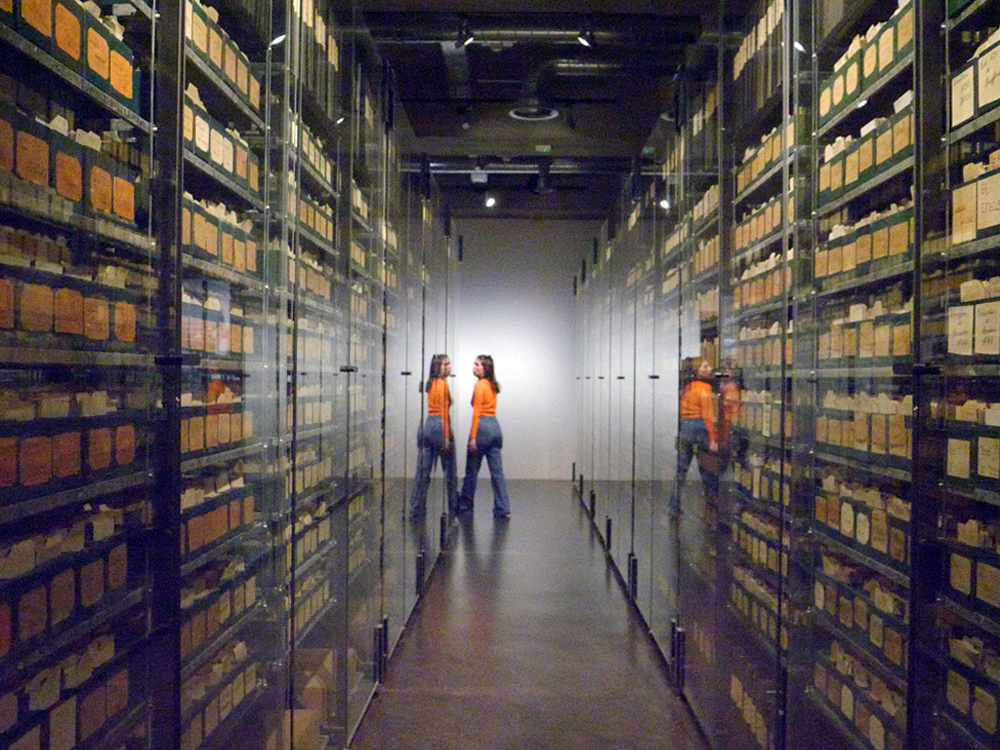
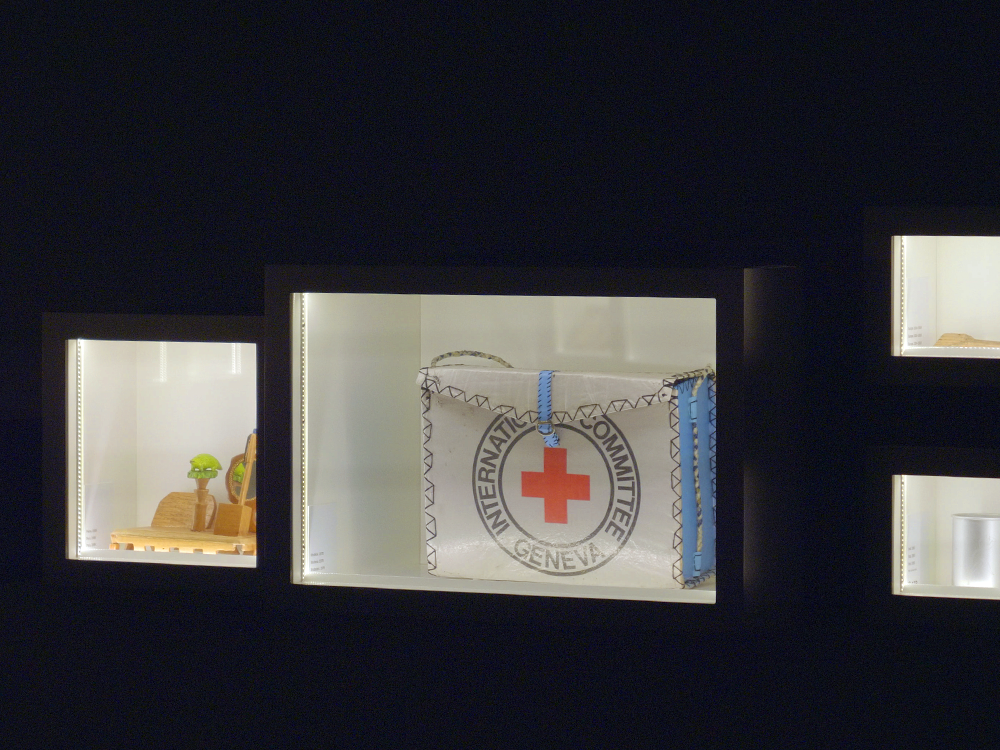
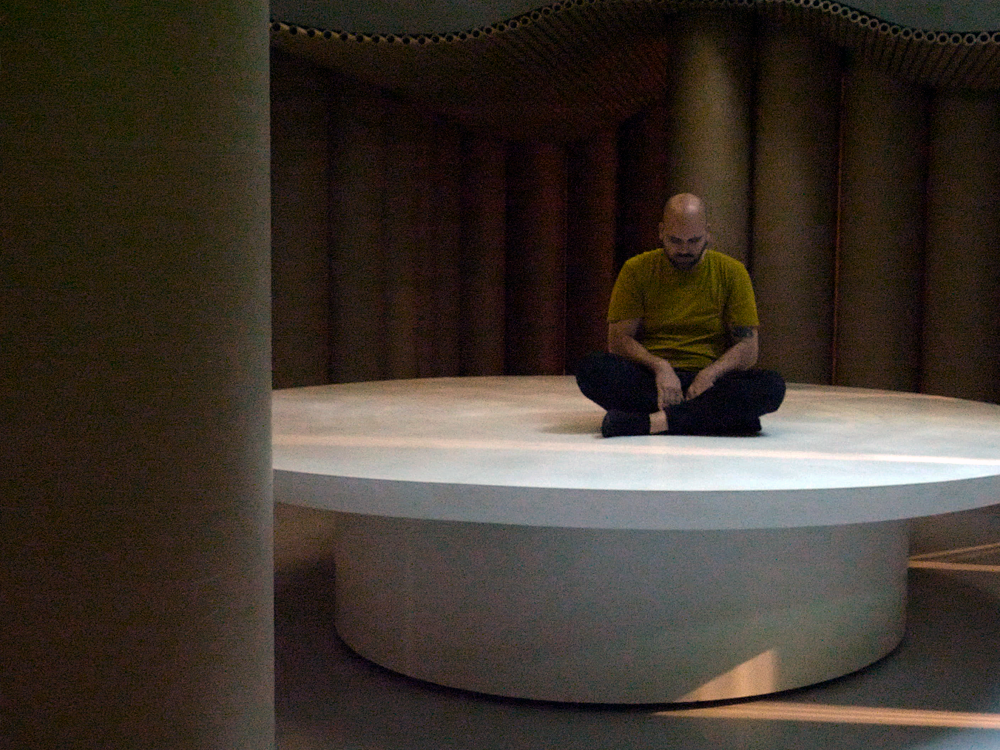
Healing Routine is a situation. The International Red Cross and Red Crescent Museum in Geneva has commissioned Cilins to create a performance on the issue of care with its employees. Cilins has delegated this work to two care professionals, two therapists who utilise dance for healing. The resulting three-channel video work intervenes the dance exercises with the personal anecdotes of the participants. Healing Routine gives a voice to the team who is never shown while at the same time shedding light on the ethnocentric, heteronormative and colonial aspects of the museum's main exhibition through fragmented views of the museum and a fantasised audio guide.
Healing Routine est une situation. Le Musée international de la Croix-Rouge et du Croissant-Rouge a commandé à Cilins une nouvelle performance sur la question du soin à réaliser avec ses employés. Cilins a délégué cette commission à deux professionnels du soin, deux thérapeutes qui utilisent la danse pour guérir. Sur trois écrans, l'œuvre mêle les exercices de danse avec les anecdotes personnelles des participant.e.s. Healing Routine donne un visage à celles et ceux qu'on ne voit jamais en même temps qu'elle éclaire les aspects ethnocentrés, hétéronormés et coloniaux de l'exposition principale du musée par des vues elliptiques et un audioguide fantasmé.
▶ Healing Routine (2022), video extract, 2'58
▶ A short video introduction (FR/EN)
☰ Short presentation on the museum’s website (EN)
☰ A press article by Pascale Zimmermann Corpataux (FR)
An invitation and an exhibition by Elisa Rusca
Workshop by Suzanne Z’Graggen and Maroussia Ehrnrooth
Filmed by Julie Bellard and Alexander Larsson
Editing Nicolas Cilins
Participants Nicolas Cilins, Fabienne Mendoza, Pierre-Antoine Possa, Cecilia Suarez, Susanne Staub
Artistic advisor Yan Duyvendak
Thanks to Dominique Auvray, Alexandre Collet, Dustin Duong, Michael Helland, Pascal Hufschmid, Sofia Kouloukouri, Anja Lückenkemper, Arnold Pasquier, Johanna Viprey, and the whole administration and guide teams at the museum.
Support by the International Red Cross and Red Crescent Museum, and the Fonds Municipal d’Art Contemporain de la Ville de Genève.
Healing Routine est une situation. Le Musée international de la Croix-Rouge et du Croissant-Rouge a commandé à Cilins une nouvelle performance sur la question du soin à réaliser avec ses employés. Cilins a délégué cette commission à deux professionnels du soin, deux thérapeutes qui utilisent la danse pour guérir. Sur trois écrans, l'œuvre mêle les exercices de danse avec les anecdotes personnelles des participant.e.s. Healing Routine donne un visage à celles et ceux qu'on ne voit jamais en même temps qu'elle éclaire les aspects ethnocentrés, hétéronormés et coloniaux de l'exposition principale du musée par des vues elliptiques et un audioguide fantasmé.
▶ Healing Routine (2022), video extract, 2'58
▶ A short video introduction (FR/EN)
☰ Short presentation on the museum’s website (EN)
☰ A press article by Pascale Zimmermann Corpataux (FR)
An invitation and an exhibition by Elisa Rusca
Workshop by Suzanne Z’Graggen and Maroussia Ehrnrooth
Filmed by Julie Bellard and Alexander Larsson
Editing Nicolas Cilins
Participants Nicolas Cilins, Fabienne Mendoza, Pierre-Antoine Possa, Cecilia Suarez, Susanne Staub
Artistic advisor Yan Duyvendak
Thanks to Dominique Auvray, Alexandre Collet, Dustin Duong, Michael Helland, Pascal Hufschmid, Sofia Kouloukouri, Anja Lückenkemper, Arnold Pasquier, Johanna Viprey, and the whole administration and guide teams at the museum.
Support by the International Red Cross and Red Crescent Museum, and the Fonds Municipal d’Art Contemporain de la Ville de Genève.